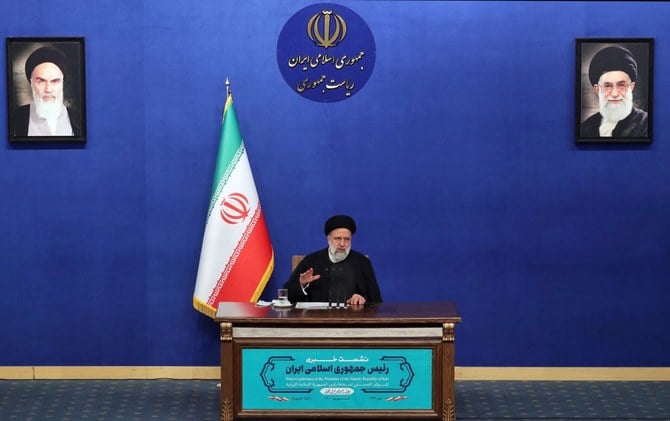
The Iranian President Hassan Rouhani recently claimed victory and said that the protests have been defeated after a wave of demonstrations swept the country due to the hike in fuel prices last week.
From the perspective of Iran’s top authorities, including the so-called moderate president of the Islamic Republic and the Supreme Leader Ayatollah Ali Khamenei, any protests in the country are a matter of national security and should be dealt with immediately.
The Iranian leaders attempted to conceal the fact that the regime’s forces have resorted to violent methods of cracking down to suppress the recent protests. The Iranian authorities deployed brute force through the Islamic Revolutionary Guard Corps (IRGC) and volunteer militia organization, the Basij. Its forces fired at protesters, killing young people, and arrested many who are innocent, including many university students mainly affiliated with Tehran University.
The regime’s recent violence against the protesters is considered the worst since the crackdown on the “Green Revolution” in 2009. Amnesty International said: “Verified video footage, eyewitness testimony from people on the ground and information gathered from human rights activists outside Iran reveal a harrowing pattern of unlawful killings by Iranian security forces, which have used excessive and lethal force to crush largely peaceful protests in more than 100 cities across Iran sparked by a hike in fuel prices on Nov. 15. At least 106 protesters in 21 cities have been killed, according to credible reports received by Amnesty International.”
The real death toll is believed to be much higher. The Iranian leadership also immediately cut off modes of communication, such as the Internet and mobile phones, in an attempt to prevent further mobilization against the regime — a lesson it learned from the widespread protests in 2009 and late 2017.
But what it is important to point out is that, even if the regime succeeds at brutally suppressing these recent waves of demonstrations, the deep frustration and anger shared by many in the country against the regime will most likely continue to simmer under the surface. There are several reasons why the Iranian regime will continue to be plagued with demonstrations.
First, every time the regime cracks down on protests, it does not address people’s underlying concerns. The Iranian regime does not appear to be concerned about the demands and aspirations of its citizens. Instead, it continues to prioritize supporting, financing, arming and training terrorist-designated groups in the region — militias that advance the ruling mullahs’ objectives.
The gap between the wealth of the ordinary people, on the one hand, and the wealth of the ruling politicians, their loyalists and gilded circles continues to grow.
Dr. Majid Rafizadeh
The fundamental problems of the Iranian people can be categorized into several issues. The economic difficulties that ordinary Iranian people suffer from are clearly evident in the country’s statistics. The rate of unemployment among young people is high, even though many are highly educated and skilled. Inflation continues to soar while the cost of everyday commodities such as foods has been skyrocketing. For example, while the monthly salary of a teacher hovers at about $200, the expenses for a four-person family in an average neighborhood (food, rent, utilities) is more than 88 million rials, or about $2,500, making it more expensive than the cost of living in some Western countries.
Many Iranians will continue to ask why should people suffer while their nation is one of the wealthiest when it comes to natural resources — Iran has the second and fourth-largest gas and oil reserves in the world respectively. It also enjoys high levels of exports in chemicals, plastics, fruits, ceramic products and metals.
Second, the gap between the wealth of the ordinary people, on the one hand, and the wealth of the ruling politicians, their loyalists and gilded circles continues to grow, which further contributes to the people’s increasing frustration. While the overwhelming majority of the people are suffering economically, the regime has significantly continued to increase the budget of the IRGC and its affiliates such as the Quds Force, as well as invest in its ballistic missile program.
Even when the regime receives billions of dollars in extra revenues — such as when the 2015 nuclear deal was struck and sanctions lifted — the beneficiaries of the extra revenue were not the ordinary people but the IRGC, Supreme Leader Ali Khamenei and loyalists to the regime. For almost 40 years, the regime’s authorities have declined to fairly redistribute wealth.
Third, people are frustrated with the widespread corruption at the top. There exists no rule of law to hold the gilded circle of the regime’s leaders accountable for how the wealth of the nation is being hemorrhaged.
The slogans that people have been chanting also show that resistance will continue because of the disaffection with the regime’s political establishment when it comes to human rights abuses, suppression of freedom of speech, press and assembly, and a lack of rule of law and justice.
The popular resistance against the Islamic Republic will not die through the regime’s crackdown and violent suppression. Demonstrations will most likely resurface in the country and always have the potential to turn into nationwide demonstrations.
• Dr. Majid Rafizadeh is a Harvard-educated Iranian-American political scientist. He is a leading expert on Iran and US foreign policy, a businessman and president of the International American Council. Twitter: @Dr_Rafizadeh
Disclaimer: Views expressed by writers in this section are their own and do not necessarily reflect Arab News" point-of-view











